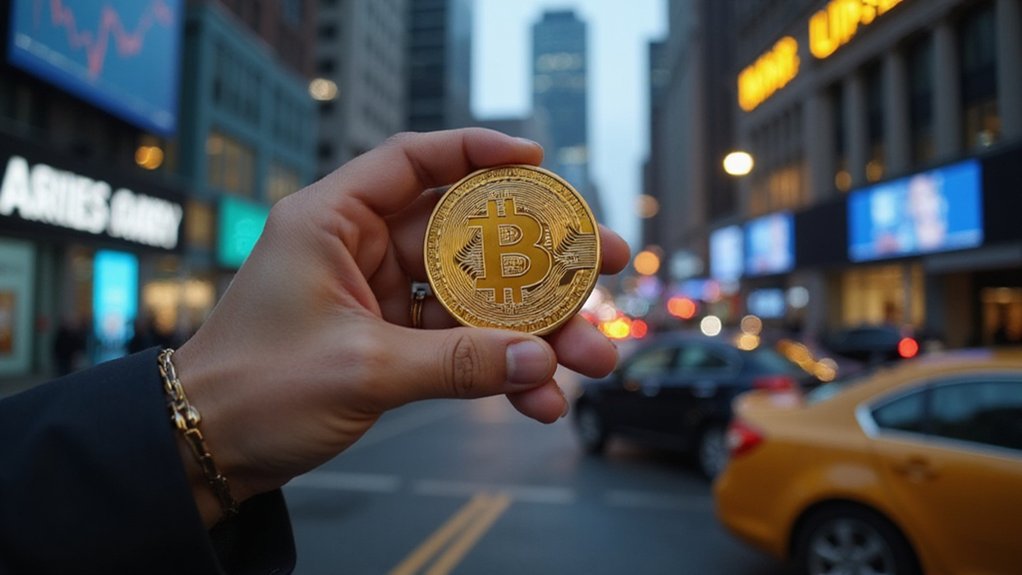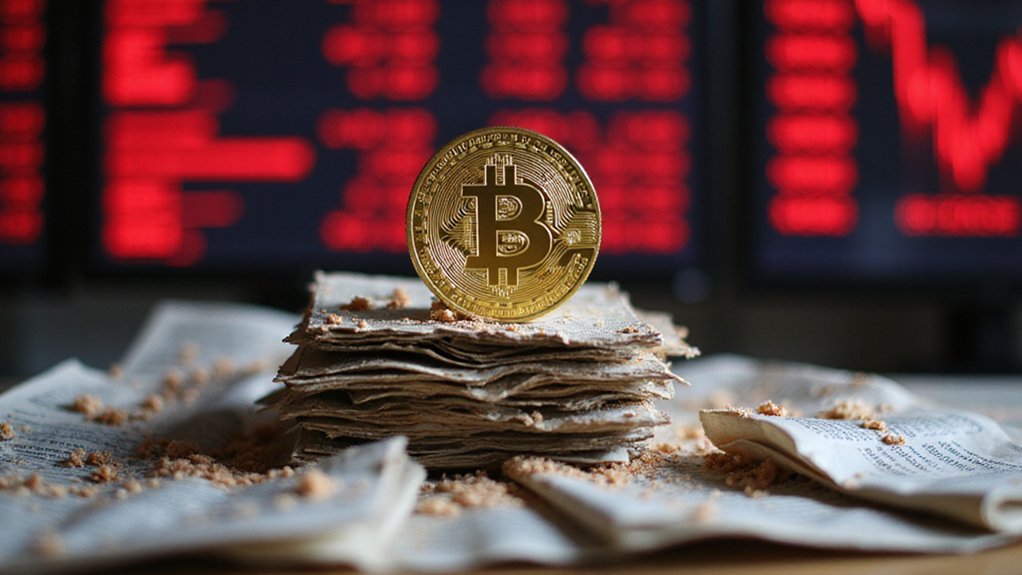How is it that a digital asset class barely mentioned in financial circles five years ago now commands over $227 billion in market capitalization?
Stablecoins, those cryptocurrency-blockchain hybrids tethered to traditional assets, have emerged as the pragmatists’ choice in the otherwise volatile crypto ecosystem.
Their meteoric rise—evidenced by 19 consecutive months of gains culminating in April 2025’s record $238 billion market cap—suggests they’ve transcended mere crypto curiosity to become legitimate financial instruments.
Stablecoins have evolved from crypto curiosities to legitimate financial instruments, marking an unprecedented expansion in digital asset legitimacy.
Tether (USDT) continues its dominance with a staggering $148 billion market cap, while USD Coin (USDC) reached an unprecedented $62.1 billion in April.
Meanwhile, FDUSD‘s 46.2% capitulation after losing parity serves as a sobering reminder of the fragility underpinning these ostensibly “stable” coins.
PayPal’s PYUSD has leveraged the payment giant’s extensive network and multi-chain versatility to emerge as a formidable contender—a masterclass in corporate-backed digital asset deployment.
The decentralized stablecoin segment presents a more nuanced picture.
DAI’s decline from $3.55B to $3.18B reflects shift uncertainties, while its integration of real-world assets represents a calculated gambit to stabilize yield.
These algorithmic alternatives, theoretically immune to centralized control, ironically remain most vulnerable to regulatory scrutiny. The current landscape shows 213 stablecoins exist across the market, creating a complex ecosystem with varying levels of stability and backing mechanisms.
Europe’s MiCA regulations have reshaped the stablecoin landscape on EU exchanges, while regulatory headwinds continue to buffet Binance’s beleaguered BUSD.
Circle’s proactive compliance approach has paid dividends for USDC, demonstrating that regulatory alignment—not evasion—may prove the superior long-term strategy.
Market dynamics reveal shifting preferences as gold-backed stablecoins gain traction amid U.S. dollar volatility, boosting non-USD stablecoins by 30% in April.
The remarkable transfer volume of $27.6 trillion in 2024 exceeded the combined volume of both Visa and Mastercard, demonstrating stablecoins’ growing significance in global payment infrastructures.
Despite their growing popularity, investors should remember there is no absolute guarantee that stablecoins will consistently maintain their pegged values in all market conditions.
Stablecoin market share’s decline from 8.64% to 7.88%, however, indicates their growth hasn’t quite kept pace with the broader crypto market’s expansion.
The integration of USDC with payment networks like Visa and Mastercard represents the holy grail of mainstream adoption—bridging traditional finance with digital assets.
For these blockchain-based instruments to truly revolutionize global finance, they must continue balancing innovation with institutional credibility, regulatory compliance with decentralized principles—a tightrope few financial innovations have successfully navigated.









